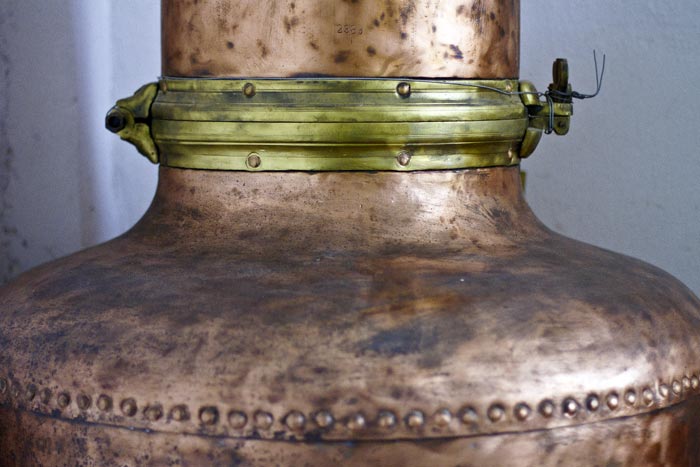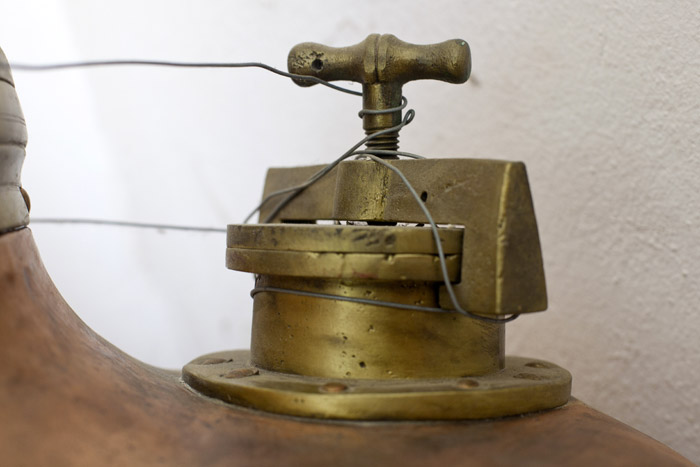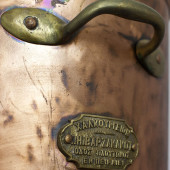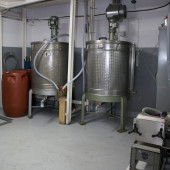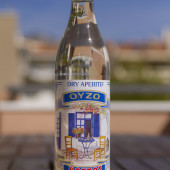text: Charis Vekris
photos: Andreas Spinos
Having met Vangelis Vourdamis, the producer of “NOSTOS”, through our website a while ago, we picked his small, family-run distillery to launch the series of presentations this column will be hosting. Vourdamis Distillery is one of many small businesses in the sector striving to remain optimistic and keep up their production despite the overall adverse economic conditions. Driven mainly by their passion for distilling, many second- and third-generation distillers doggedly continue to give it their all, putting all their love and attention into the bottles of ouzo that reach our table, through a great deal of hard work and using techniques handed down by their fathers and grandfathers.
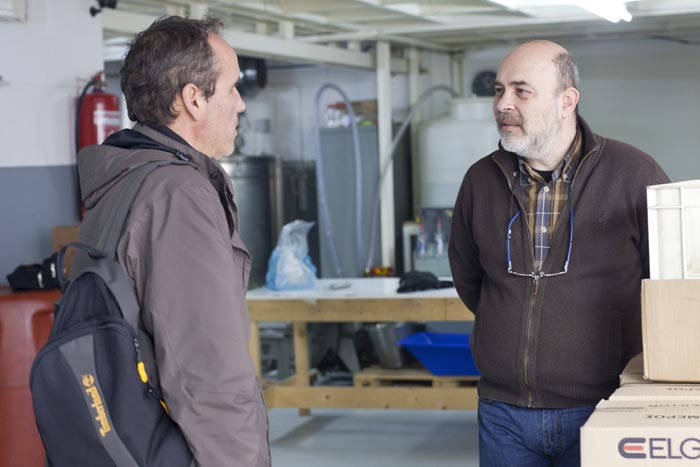
Vangelis Vourdamis, who started working when he was barely 15 years old at the distillery his father, Giorgos Vourdamis, had established, is one of those passionate individuals. The descendants of refugees from Smyrna, Giorgos Vourdamis and his brothers were first initiated into the secrets of the trade while working at the Chatzimihalis Distillery, Kaisariani.
Vourdamis Distillery was established in the 1950’s on family-owned property in Melissia, where it began producing traditional drinks such as brandy and ouzo, a wide range of liqueurs and vermouths, all crafted with the passion so typical of Asia Minor’s Greek community.
Following his father’s demise in 1988, Vangelis took over the traditional family business and modernized it, by marrying tradition with state-of-the-art production and standardization methods. By 1995, the company had moved to its current facilities in Penteli and had acquired the latest in modern production equipment.
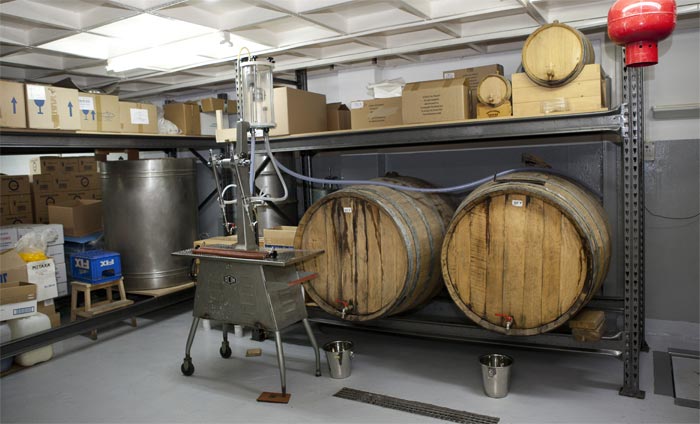
Today, having shifted the focus of its activity to the bottling of pure and denatured alcohol to respond to increasing market demand, Vourdamis Distillery still produces ouzo and brandy. The ouzo produced by the company does not exceed 1,000 liters annually and reaches the market via a small number of Attica-based wholesalers.
The traditional, centuries-old, built copper pot still dominating the entrance of the Distillery has been inactive for a long time and the distillate that makes up 20% of its ouzo is produced by a fellow distiller of Vangelis’ who is famous for his exquisite distillates. To produce the ouzo, Vangelis first dilutes the 96° pure alcohol in water to get it to 40°. He then adds to the mixer the distillate, the liquid aniseed extract (anethole), and a bit of sugar. The distillate’s alcoholic strength ranges from 65% to 72% vol, so it is further diluted in water until it reaches 40% vol. Before “Nostos” enters the bottle, it is filtered and stored for 1-2 days in tanks, so that the ingredients may get to “know” each other and marry harmoniously.
What does it mean for a distillery not to be producing its own distillate? “There are quite a few distilleries in the country that have stopped distilling. Perhaps they’re even more than the ones that still do. That doesn’t necessarily mean their products are lacking in quality. Theoretically speaking, when ouzo is 100% distilled, it’s better. Still, I think it’s all a matter of taste. Many people complain that ouzo production today is nothing more than chemistry, whereas tsipouro and raki are pure, “clean” drinks. You can’t make ouzo with vinous alcohol, because it will smell awful. Vinous alcohol is for making cognac. However, ouzo made with 20% distillate, containing topnotch herb extracts, and mixed right can satisfy even the most demanding connoisseur,” says Vangelis Vourdamis in all frankness. After all, he is not speaking to us in a promotional capacity nor is he driven by some fierce spirit of competitiveness, as he produces ouzo in extremely small quantities.
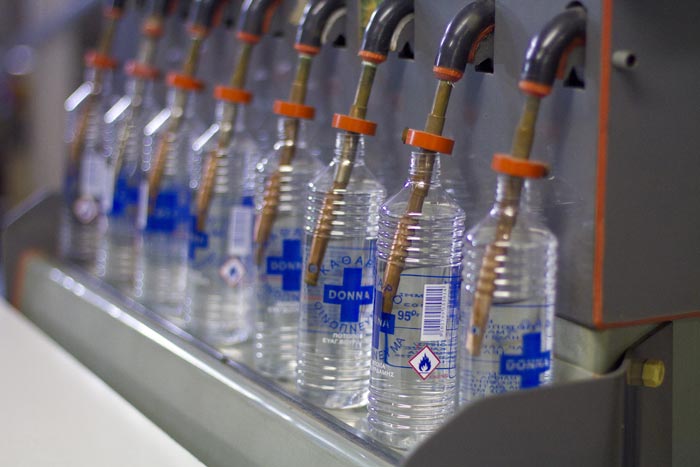
Which herbs do you use? “My father taught me the importance of simplicity: the simpler the product, the higher the enjoyment for the consumer. Besides, it’s consumers who will steer you towards the right way of shaping your product. All you need is the finest quality alcohol, excellent water that’s been filtered, aniseed extract, and a bit of sugar to sweeten it up. Whether you distil the mixture yourself or you just mix it in, the ingredients remain the same. I believe that such claims as ‘water from area X is better’ or ‘aniseed from village Y is the best’ are mostly a matter of marketing.”
What makes ouzo turn white? “The milky-white color that emerges once ouzo has been mixed with water depends on the quantity of aniseed extract the ouzo contains, but also on the weather. For example, in winter, it’s better to add less water so that the cold weather’s vapors don’t turn the ouzo too cloudy.”
What is the right way to drink ouzo? “Ouzo should be mixed with cold water or served over ice. Some restaurants store ouzo bottles in the freezer, just like bars do with vodka. However, when ouzo freezes, it forms crystals. That can alter its flavor and it certainly doesn’t do ouzo any good.”
We left Vangelis and his distillery’s three employees working in a space flooded with aniseed aromas. We were in no doubt that our tour of the country’s distilleries will prove an excellent opportunity for us to learn lots of interesting stuff about ouzo from the fascinating ouzo craftsmen themselves.
Makedonias 23, Melissia
P. +30 2106135993
F. +30 2108048103
http://www.vourdamis.gr/

